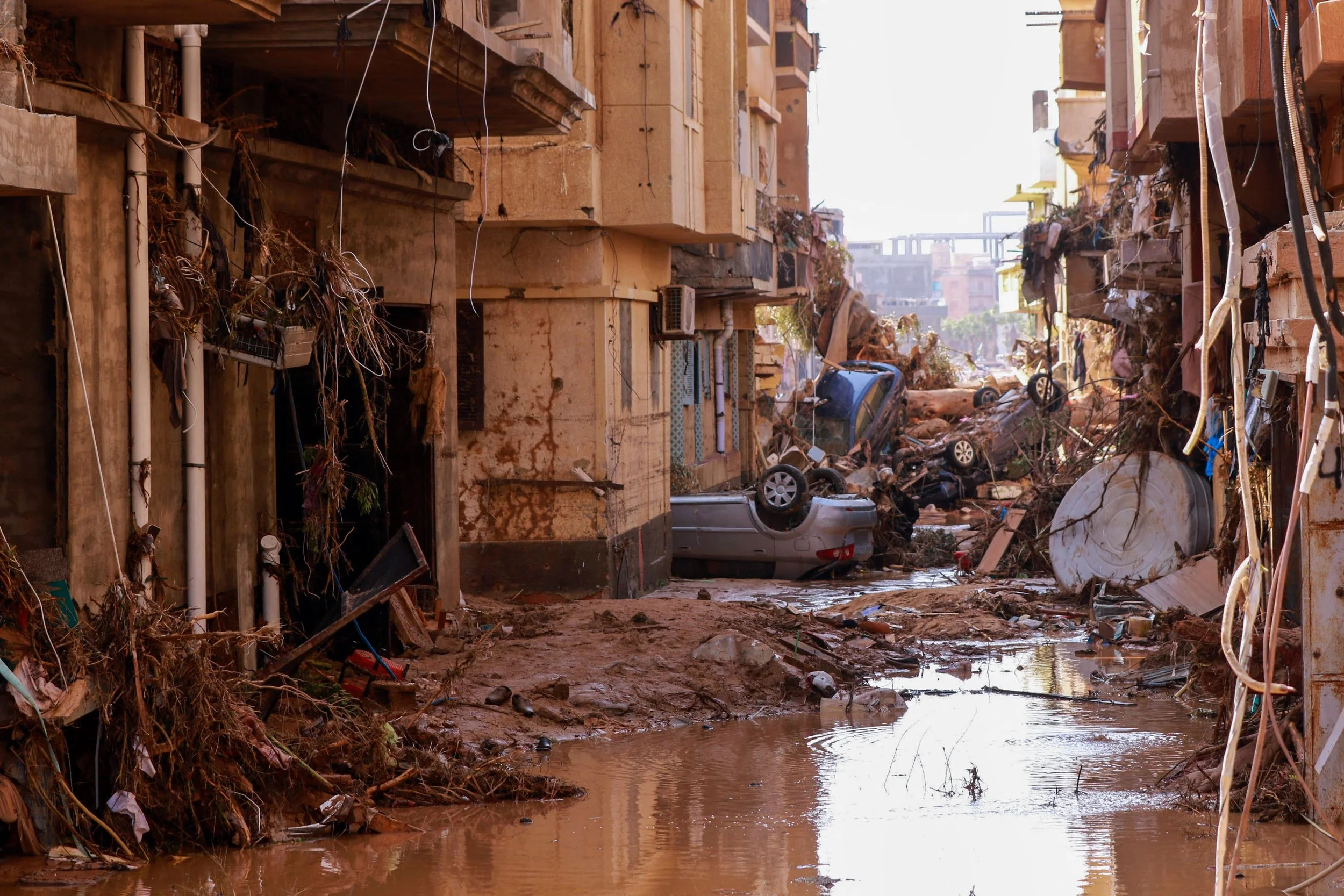
‘Don’t Call it a Comeback’:
Adaptation, COP30 and the Arab World’s Climate Stakes
By Dina Zayed
11 November 2025
Global leaders are gathering in the Amazon city of Belém for the annual United Nations climate conference. The symbolism of returning to the country that birthed the international environmental regime, on the 10th anniversary of the Paris Agreement, has escaped few. But the world has visibly changed in the few years since Brazil was announced as host of the 30th Conference of the Parties (COP30) of the United Nations Framework Convention on Climate Change (UNFCCC). What were once high expectations guided by hope and optimism have given way to a politics of pragmatism, where the trophy to gain is in ensuring climate action doesn’t fall victim to a changing global order.
COP30 is putting to test some of the issues that matter most for the world’s most climate vulnerable communities. From scaling finance to investing in resilience and adaptation at a time of fracturing geopolitical attention, new centers of leadership are vying to signal that the show must go on.
This year, COP30’s incoming President André Aranha Corrêa do Lago has committed to the impossibly challenging task of restoring confidence in a waning multilateral process – and the Brazilians will need help. The COP30 Presidency has been consistent in its vision for a “COP of Implementation.” Following Egypt and the UAE, Brazil roots its presidency in Global South realities: treat resilience as investment—one the world cannot afford to neglect.
For most countries of the Global South, giving adaptation the stage it always demanded is no comeback; it’s a basic ingredient of credibility and the start of an overdue reckoning that places just equitable climate action in its political and economic context.
For the Arab world, a shifting global conversation on adaptation must be seen as a renewed opportunity to advance regional priorities. Belonging to a region warming twice as fast as the global average, and which must reconcile complex trade-offs on using its hydrocarbons to meet growth needs, leaders know what it means for climate and development to be intrinsically connected.
For most countries of the Global South, giving adaptation the stage it always demanded is no comeback; it’s a basic ingredient of credibility and the start of an overdue reckoning that places just equitable climate action in its political and economic context
‘Measure What Truly Matters’
In the countdown to Belém, most countries missed the original deadline to submit their Nationally Determined Contributions (NDCs) – a core part of the Global Stocktake (GST). In calculations before China and the European Union released their NDCs at the 11th hour, global emission cuts in 2025 were expected to fall short of what is needed, cutting emissions by just 10 percent by 2035 relative to 2019 levels. That is around one-sixth of what is required to maintain a 1.5°C pathway.
To start negotiations on such grounds, and with a backdrop of emissions rising to record levels in 2024, does little to convey the urgency of action required at this moment. The trend holds in the Arab region as well; only four Arab countries have submitted updated national plans to date. Lebanon, Jordan, Morocco, and the United Arab Emirates have all put forward new commitments, yet none strengthened 2030 targets.
Yet, against these sobering figures, there are signs of movement. A growing coalition recognizes that the era of pledges must give way to implementation, and many recent NDCs reflect that shift. Of the submissions to date, including those from the Arab world, 89 percent incorporate economy-wide targets, 94 percent refer to loss and damage, and 73 percent include adaptation. These are all welcome signs of progress.
The focus on implementation fundamentally means expanding the conversation to look beyond emissions as our sole indicator of success. In Belém, negotiators need to secure a global climate finance package and provide clear signals on how to unlock capital for any national plans to move from pledges to reality. Countries must also finalize their national adaptation plans this year. A multi-year negotiation to design the Global Goal on Adaptation, intended to create credible metrics on how to progress and measure adaptation, will further draw to a close.
For the Brazilians, who released the first-ever COP Presidency letter on adaptation, COP30 must, in this context, also be the “COP of adaptation” – in which resilience isn’t treated as an afterthought, but “the first half of our survival.” Ana Toni, COP30’s Chief Executive Officer, describes a hope that Belém will mark a turning point, where national adaptation plans become “investable strategies” and resilience is embedded in fiscal policy. To do both, “data and tools” need to be scaled to help us “measure what truly matters.” In this, adaptation and mitigation do not sit on opposing ends.
Belém’s greatest legacy would be to institutionalize this growing recognition that climate action is connected and whole; focusing on one part of the puzzle without seeing the rest is a recipe for failure. But turning commitments into reality will require a decisive shift toward mobilizing finance and equipping countries with the means to manage escalating climate risks.
Debris caused by flash floods in Derna, eastern Libya, on September 11, 2023 [AFP]. Libya’s post-flood recovery needs were estimated at $1.8 billion, yet only $71.4 million were mobilized — less than four percent of the required funds for loss and damage. 32 of the 70 most climate-vulnerable countries have received less than USD$1 per person for disaster risk reduction and adaptation.
Money in the Spotlight
COP30 is meant to offer direction on the Baku to Belém Roadmap that committed to the scaling up of climate finance to developing countries by at least $1.3 trillion annually by 2035. It will also need to confront the worrying state of adaptation finance. For the Arab world, like its allies across the Global South, these two issues are core priorities and at the heart of the region’s climate policy agenda.
Egypt, the UAE, Morocco, and Saudi Arabia have already contributed to the Brazilian-led COP30 Circle of Finance Ministers consultation. The report calls for scaling up concessional finance and optimizing climate funds, reforming multilateral development banks, and developing innovative financial solutions for blended capital mobilization.
Those recommendations complement the recently released Adaptation Gap Report for 2025, which shows that developing countries will require 12 to 14 times more funding by 2035 if there can be any credibility in tackling woefully inadequate adaptation finance flows. International public adaptation finance fell to $26 billion in 2023, and debt-creating loans are not only rapidly taking over grant finance, but they are also making resilience unaffordable for the world’s most vulnerable.
These finance inequities fit within an overall global picture where 32 of the 70 most climate-vulnerable countries have received less than $1 dollar per person for disaster risk reduction and adaptation. In the context of the Arab world, most of the tiny fraction of global climate finance that makes its way to the region has been in the form of loans and concessional finance, with a mere $775 million in grants received between 2003 and 2024. This troubling picture fits with an overall context in which the region’s external debt has climbed by 23 percent since 2020 to $443 billion. For the most fragile economies of the Arab world, the financial requirements to adapt to climate change face off against an increasingly debt-constrained and fiscally uncompromising reality. MENA’s poorest countries are spending as much as five times on debt servicing than on health.
Confronting global financial reform head-on is the only way to ensure the climate and development agendas move together. In doing so, COP30 can finally bring adaptation from the margins and into the spotlight
It is in this context that Belém will need to set an ambitious adaptation finance target and address the fiscal conditions that make adaptation action possible. As Dr. Mahmoud Mohieldin, UN Special Envoy on Financing the 2030 Agenda, emphasized, aligning COP30 outcomes with the Sevilla Commitment will be one outcome to look out for. To truly turn promises into action, the international community will need to scale concessional finance, advance linkages between climate and debt, and put in place credible delivery and accountability mechanisms. Confronting global financial reform head-on is the only way to ensure the climate and development agendas move together. In doing so, COP30 can finally bring adaptation from the margins and into the spotlight.
This negotiation is unlikely to rewrite geopolitical fault lines, and COP30 cannot and will not deliver miracles. But what the conference can do is commit to connecting the dots – and naming the elephants in the room. When development and climate change are not treated as separate conversations, a more equitable, inclusive, and just vision for transformation may be possible.
Belém stands a chance to be remembered for ensuring that resilience and finance are no longer footnotes in climate negotiations. They never belonged there. The region must act on this opportunity.
Dina Zayed is an Associate Fellow at the Carboun Institute.




